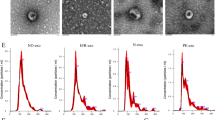Summary
The mechanism of injury on the human glomerular endothelial cells (ciGENC) induced by preeclampsia serum was investigated. Concentration of maternal serum sFlt-1 protein was detected by ELISA. Fluorescently-labeled bovine serum albumin infiltrating through lower chamber of Transwell was measured by multifunction microplate reader. Morphologic change of ciGENC was observed under inverted phase contrast microscope. The concentration of sflt-1 in preeclampsia groups was significantly increased as compared with control group (P<0.01). Permeability in preeclampsia groups was significantly increased as compared with control group (P<0.01). By contrast with severe preeclampsia group, the permeability of ciGENC monolayer in mild preeclampsia group was decreased significantly (P<0.05). Intervention of exogenous VEGF significantly decreased permeability of ciGENC in preeclampsia groups. It was concluded that sFlt-1 increased ciGENC permeability by damaging integrity of endothelial barrier function.
Similar content being viewed by others
References
Sibai B, Dekker G, Kupferminc M, et al. Preeclampsia. Lancet, 2005,365(9461):785–799
Lorquet S, Pequeux C, Munaut C, et al. Aetiology and physiopathology of preeclampsia and related forms. Acta Clin Belg, 2010,65(4):237–241
Myers J, Mires G, Macleod M, et al. In preeclampsia, the circulating factors capable of altering in vitro endothelial function precede clinical disease. Hypertension, 2005, 45(2):258–263
LaMarca BD, Gilbert J, Granger JP, et al. Recent progress toward the Understanding of the pathophysiology of hypertension during preeclampsia. Hypertension, 2008,51(4): 982–988
Germain AM, Romanik MC, Guerra I, et al. Endothelial dysfunction: a link among preeclampsia, recurrent pregnancy loss, and future cardiovascular events? Hypertension, 2007,49(1):90–95
Stillman IE, Karumanchi SA. The glomerular injury of preeclampsia. J Am Soc Nephrol, 2007,18(8):2281–2284
Deen WM. What determines glomerular capillary permeability? J Clin Invest, 2004,114(10):1412–1414
Tsatsaris V, Goffin F, Munaut C, et al. Overexpression of the soluble vascular endothelial growth factor receptor in preeclamptic patients: pathophysiological consequences. J Clin Endo Meta, 2003,88(11):5555–5563
Maynard SE, Min JY, Karumanchi SA, et al. Excess placental soluble fms-like tyrosine kinase 1 (sFlt1) may contribute to endothelial dysfunction, hypertension, and proteinuria in preeclampsia. J Clin Invest, 2003,111(5): 649–658
Yelumalai S, Muniandy S, Omar SZ, et al. Pregnancyinduced hypertension and preeclampsia: Levels of angiogenic factors in Malaysian women. J Clin Biochem Nutr, 2010,47(3):191–197
Asanuma K, Yanagida-Asanuma E, Takagi M, et al. The role of podocytes in proteinuria. Nephrology (Carlton), 2007,12( 3):15–20.
Patrakka J, Tryggvason K. New insights into the role of podocytes in proteinuria. Nat Rev Nephrol, 2009,5(8):463–468.
Garovic VD, Wagner SJ, Petrovic LM, et al. Glumerular expression of nephrin and synaptopodin, but not podocin, is decreased in kidney sections from women with preeclampsia. Nephrol Dial Transplant, 2007,22(4):1136–1143
Collino F, Bussolati B, Gerbaudo E, et al. Preeclamptic sera induce nephrin shedding from podocytes through endothelin-1 release by endothelial glomerular cells. Am J Physiol Renal Physiol, 2008,294(5):1185–1194
Satchell SC, Tasman CH, Singh A, et al. Conditionally immortalized human glomerular endothelial cells expressing fenestrations in response to VEGF. Kidney Int, 2006,69(9):1633–1640
van Setten PA, van Hinsbergh VW, van der Velden TJ, et al. Effects of TNF alpha on verocytotoxin cytotoxicity in purified human glomerular microvascular endothelial cells. Kidney Int, 1997,51(4):1245–1256
Shibuya M. Structure and dual function of vascular endothelial growth factor receptor-1(Flt-1). Int J Biochem Cell Bio, 2001,3(4):409–420
Levine RJ, Maynard SE, Qian C, et al. Circulating angiogenic factors and the risk of preeclampsia. N Engl J Med, 2004,350(7):672–683
Powers RW, Roberts JM, Cooper KM, et al. Maternal serum soluble fms-like tyrosine kinase 1 concentrations are not increased in early pregnancy and decrease more slowly postpartum in women who develop preeclampsia. Am J Obstet Gynecol, 2005,193(1):185–191
Nakatsukasa H, Masuyama H, Takamoto N, et al. Circulating leptin and angiogenic factors in preeclampsia patients. Endocr J, 2008,55(3):565–573
Karumanchi SA, Lindheimer MD. Advances in the understanding of eclampsia. Curr Hypertens Rep, 2008, 10(4): 305–312
Ahmad S, Ahmed A. Antiangiogenic effect of soluble vascular endothelial growth factor receptor-l in placental angiogenesis. Endothelium, 2005,12(1–2):89–95
Kang DH, Johnson RJ. Vascular endothelial growth factor: a new player in the pathogenesis of renal fibrosis. Curr Opin Nephrol Hypertens, 2003,12(1):43–49
Fan L, Wakayama T, Yokoyama S, et al. Downregulation of vascular endothelial growth factor and its receptors in the kidney in rats with puromycin aminonucleoside nephrosis. Nephron, 2002,90(1):95–102
Kang DH, Hughes J, Mazzali M, et al. Impaired angiogenesis in the remnant kidney model: II. Vascular endothelial growth factor Administration reduces renal fibrosis and stabilizes renal function. J Am Soc Nephrol, 2001,12(7):1448–1457
Author information
Authors and Affiliations
Corresponding author
Additional information
This project was supported by a grant from Doctoral Program of Higher Education Research Fund Project (No.2010014 2110074).
Rights and permissions
About this article
Cite this article
Du, H., Liu, H., Zhao, J. et al. Effects of maternal serum on permeability of glomerular endothelial cell membrane. J. Huazhong Univ. Sci. Technol. [Med. Sci.] 31, 17–20 (2011). https://doi.org/10.1007/s11596-011-0143-7
Received:
Published:
Issue Date:
DOI: https://doi.org/10.1007/s11596-011-0143-7




